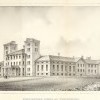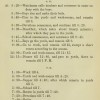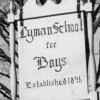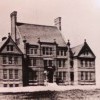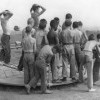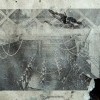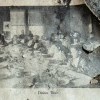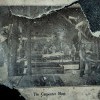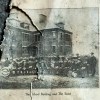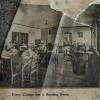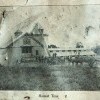Following Old Footsteps |
|
A PHP Error was encountered
Severity: Notice
Message: Only variables should be passed by reference
Filename: pages/site.php
Line Number: 13

- Genre:Juvenile Detention Center
- Comments: 224
- Built:1885
- Opened:1885
- Age:140 years
- Closed:1971
- Demo / Renovated:N/A
- Decaying for:54 years
- Last Known Status:Abandoned

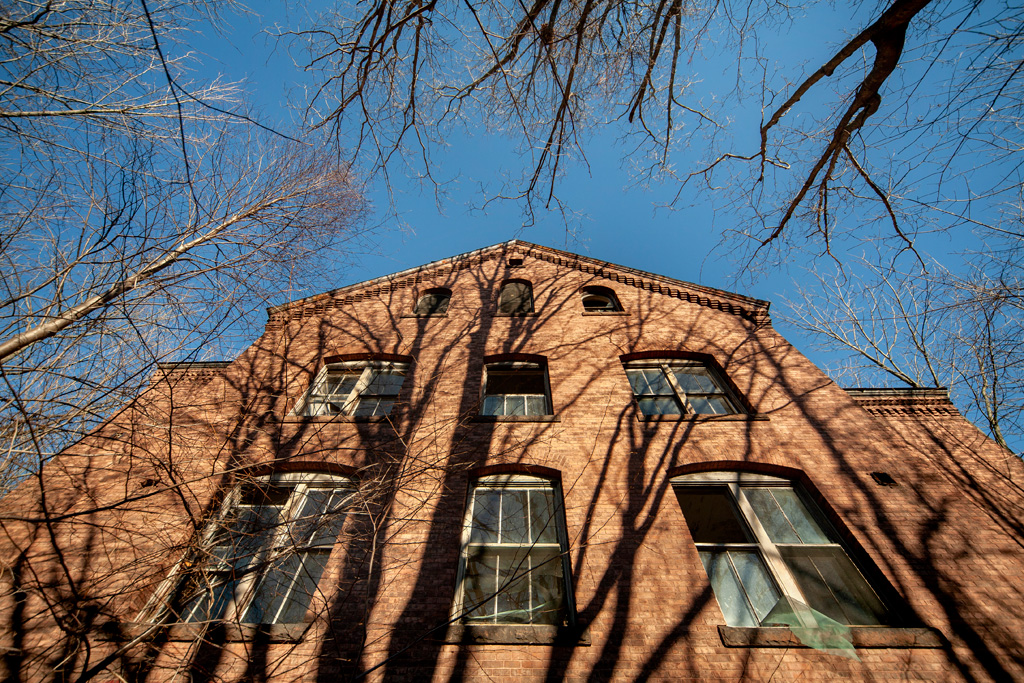
Photo © 2006 Tom Kirsch, opacity.us
Lyman School for Boys History
Massachusetts' first public reform school for juvenile offenders was established in 1848 on Lake Chauncy in Westborough, where inmates were housed in a single building known as simply "State Reform School." The boys were given school and religious instructions while also performing manual labor in an attempt to "reform" their behavior and return them as contributing members of society. Their ability to work the fields, prepare food, clean, and craft or repair items was utilized to keep the institution running on a minimal budget, much like how the asylums for the insane were run at the time. Inmates were released when they were considered "reformed" or until they reached the age of 21.
After a particularly bad riot in 1878 and negative press concerning abuse of the boys made headlines, it was decided that the single congregate-style building was not suited for this purpose and deemed a failure. It was decided to move the institution to a new campus where smaller, detached buildings served various functions; known as the cottage system, it had begun to gain popularity among the designers of many state institutions during this time. The old reform school was renovated to become the Westborough Insane Hospital in 1886.
A farm on Powder Hill was purchased in 1885 for the new cottage institution, not far from the original school building on the opposite side of Lake Chauncy. The new campus was called Lyman School for Boys, named after the Boston philanthropist Theodore Lyman. The institution consisted of cottage-style dormitories, an auditorium/chapel building, administrative and support buildings, as well as a working farm. The dormitories were brick structures that could hold about 30 boys in each, and segregated the boys based on their age and ability. Showers and locker rooms were located in the basement, the first and second floors were for meetings and daily activities, and the top floor was called the "ramp," where students slept. Each dormitory was administered by a married couple, known as the master and matron; this was intended to instill a sense of family for the boys, many of whom had been orphaned or rejected by their own families (interestingly, the married staff method of supervision in cottages was also attempted for the insane at Worcester State Hospital, but rejected). The masters and matrons at Lyman cottages were assisted by a school teacher and a laundress.
Despite the fact that some boys had committed serious crimes, the Lyman School campus was rather open and resembled a preparatory school rather than a prison. Doors were unlocked and there were no walls or fences. Instead of iron bars and barriers, residents were trained to stay at the facility using a combination of education, honor and threat of punishment. Although security was lax, daily life at the school was strict and heavily regimented. Religious education was required (the only options were Catholic or Protestant), as was learning a trade from a skilled tradesman - this was not optional. The boys worked the farm, cooked the food, repaired the buildings and did the laundry; these skills were intended to be used once released.
The school grew throughout the Great Depression, and eventually expanded to over 700 acres of land and eight cottages. Buildings were given colloquial names such as Lyman Hall, Chauncey, Overlook, Sunset, Hillside, Wachusett, Worcester, Westview, Elms and Oak. A large print shop produced much of the official Commonwealth documents and government stationary. During World War II, many of the boys and employees were drafted or enlisted, leaving those few that remained to tend to the kitchens and coal-fed boilers to keep the institution running.
After World War II, the population at Lyman had started to take on a tougher demeanor with many violent, mentally unstable, and illiterate young men. The younger and less-troubled students were moved elsewhere as social services became available, and during the 1950s and 1960s Lyman saw an influx of older offenders who were involved in gangs, drugs, alcohol, and weapons. The master-matron model was discontinued during this time due to practicality, replaced by a single cottage master. In 1953 the farming program was also halted, as trade unions and advocacy groups saw the work as nothing more than free child labor. The fields went fallow and the animals were sold off as the boys were relegated to pass the time doing household chores or watching television. Despite the discontinuation of these programs, the school still burgeoned with young men, prompting the addition of a central cafeteria and school building. There were over 590 students at Lyman by 1960, with some even sleeping underneath beds in the small cottages due to overcrowding.
The 1960s were hectic years at Lyman as efforts to de-institutionalize the facility sought to empty the school, while administrators wrested with bureaucratic turmoil and disorganization. In 1971, girls were admitted to two cottages and the facility was co-educational for the first time, making it even more difficult for staff to maintain control. Without vocational training or sufficient education programs, many residents were considered lost causes, never to be returned to normal society. Students at the school often caused disturbances that required police intervention to maintain control. Runaways were common, and the sound of the fire whistle was often heard as students escaped the premises. The threat of being sent to the Lyman School was often used by parents to scare their children into behaving.
Around 1971-1972 the Lyman School was closed for good, leaving 265 acres of land and a number of buildings behind. Some of the cottages have been re-purposed, however a few structures remain abandoned and in various states of deterioration.
Sources include Richard Johnson's page (who also authored a book about the school), this article by Glenn Parker, and this footage found in 2018, narrated by Rev. Bob Brown, the former Lyman chaplain and administrator.

